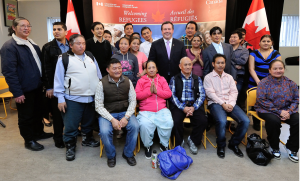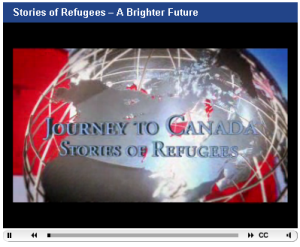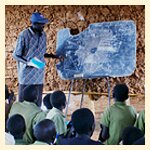Canada has been engaged in protecting, accepting and resettling refugees since World War II. Since that time approximately 800,000 refugees have been settled in Canada from around the world. These include prominent citizens such as former governor general Michaelle Jean, and performer K’Naan. Since 2002, Canada has been among the top three re-settlement countries in the world for refugees, along with the US and Australia. The  Government is increasing the number of refugees and other persons in vulnerable circumstances that this country resettles each year by 20%. By 2013, Canada will resettle up to 14,500 refugees and other vulnerable persons a year. Refugees comprise about 15% of the permanent residents admitted to Canada each year. The top source countries are Iraq, Bhutan, Somalia, Afghanistan, Ethiopia, Democratic Republic of the Congo, Eritrea, Burma, Colombia and Iran. For more detail see the UNHCR and CIC resources in Links: Teaching Resources.
Government is increasing the number of refugees and other persons in vulnerable circumstances that this country resettles each year by 20%. By 2013, Canada will resettle up to 14,500 refugees and other vulnerable persons a year. Refugees comprise about 15% of the permanent residents admitted to Canada each year. The top source countries are Iraq, Bhutan, Somalia, Afghanistan, Ethiopia, Democratic Republic of the Congo, Eritrea, Burma, Colombia and Iran. For more detail see the UNHCR and CIC resources in Links: Teaching Resources.
Citizenship and Immigration Canada relies on the United Nations High Commissioner for Refugees (UNHCR) and other referral organizations to find and refer refugees to be resettled in Canada. Convention refugees may be government sponsored or privately sponsored. Individuals seeking asylum may also claim refugee protection from inside Canada. Refugee claimants are temporary residents while they await a decision about their claim. During this time they are entitled to employment, education and basic social services. Every year between 20 and 25 thousand people claim refugee protection in Canada. The top source countries for refugee claimants are Mexico, Haiti, Hungary, China, Colombia, Nigeria, Pakistan, Namibia and Sri Lanka.
For more information see How Canada’s refugee system works.
To view the Youtube video, Journey to Canada: Stories of Refugees – A Brighter Future, click on the image below.
 To learn more about the background of these refugee groups see the Links: Cultural Profiles.
To learn more about the background of these refugee groups see the Links: Cultural Profiles.
It is not always clear to schools which of their newcomer students are of refugee background. There are many reasons why families choose not to disclose this information. It is helpful to understand the categories by which immigrants are classified to be sensitive to their potential settlement and learning needs. Citizenship and Immigration Canada has a number of codes which identify convention refugees, asylum country classes, source country classes and dependents. The computer assisted immigration processing systems (CAIPS) codes found on immigration papers provide useful information about the circumstances surrounding students’ migration to Canada. See also Tips for Identifying Students with Limited Formal Schooling.



